Galaxies are concentrations of millions or billions of stars, gravitationally bound together along with gas clouds and pockets of dust. There are probably over 100 billion of them in the Universe, but what galaxies can you see in the night sky with a telescope?
Some of the largest nearby galaxies appear in the night sky as faint smudges of light, but it was only in the early 20th century that astronomer Edwin Hubble proved that they actually exist well beyond the Milky Way.

Before then, they were thought to be spiral-shaped nebulae on the outskirts of our own Galaxy, and the subject of the historic Great Debate of 1920.
Hubble also established that galaxies vary in shape and size (for more on this, read the latest analysis of Hubble's Tuning Fork).
Two-thirds have distinctive spiral patterns, while the rest range from neat ellipticals to irregular blobs. They can be dwarves containing millions of stars or giants harbouring trillions.
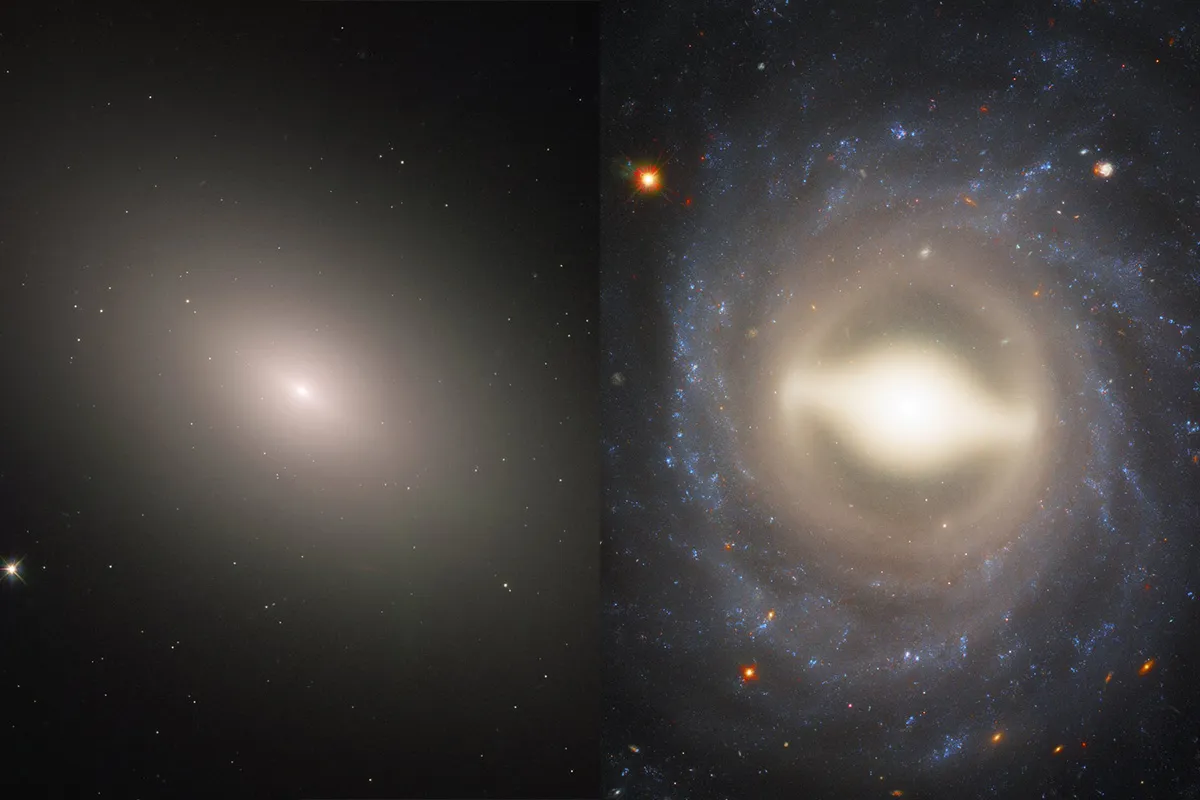
It is possible to see a range of galaxies in the night sky, and we've picked out 7 of the best, most beautiful, including info on how to find them and what you might expect to see.
Many of the objects below are Messier objects. You'll find these and more in our complete guide to the Messier Catalogue.
See if you can spot a nearby galaxy through your telescope tonight.
The Andromeda Galaxy, M31
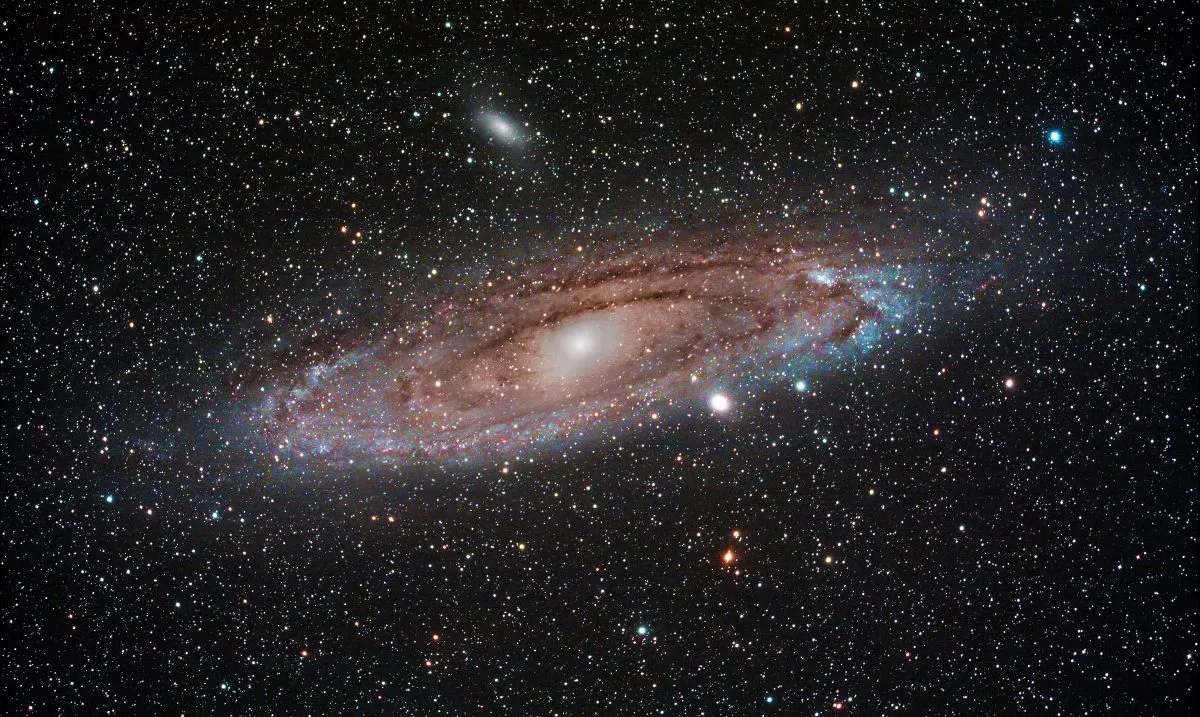
Constellation: Andromeda
RA 00h 42m 42s dec. +41° 16’ 00”
The magnificent Andromeda Galaxy is the nearest large galaxy to the Milky Way, and it is possible to see the Andromeda Galaxy with the naked eye.
Under dark, Moon-free skies, you should be able to find this spiral galaxy as a faint misty patch a short distance from the band of the Milky Way without optical aids.
Using binoculars, you’ll find it with little or no difficulty. It will be oval in appearance – although you won’t be able to make out any of the individual stars within it.
Through a 6-inch telescope the galaxy appears as a larger, elongated oval shape with a core that shows up as a slightly brighter area.
The Whirlpool Galaxy, M51
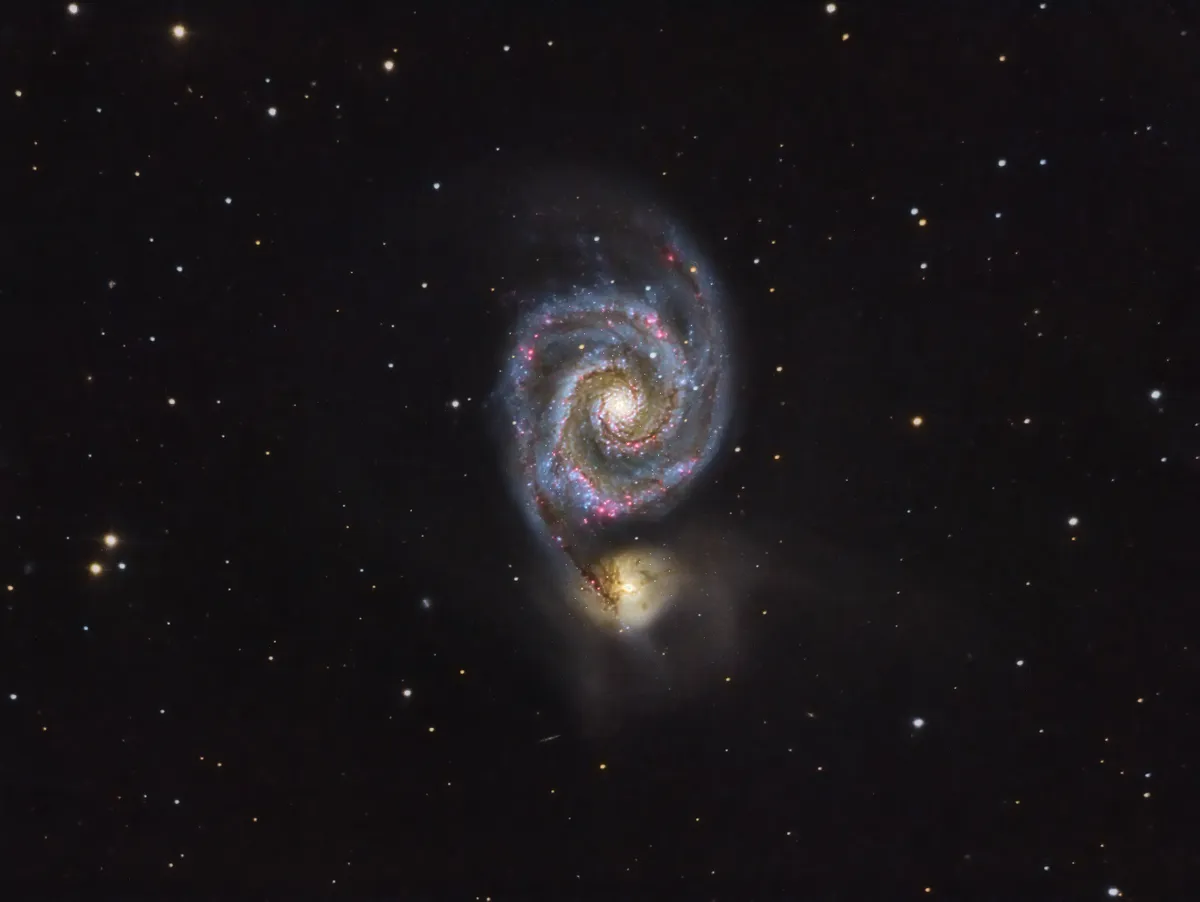
Constellation: Canes Venatici
RA 13h 30m 00s dec. +47° 16’ 00”
The Whirlpool Galaxy is a magnificent face-on spiral located in Canes Venatici.
It can be found not far from mag. +1.9 Alkaid (Eta (η) Ursae Majoris). You’ll need a large telescope to see its spiral arms clearly.
The Triangulum Galaxy, M33
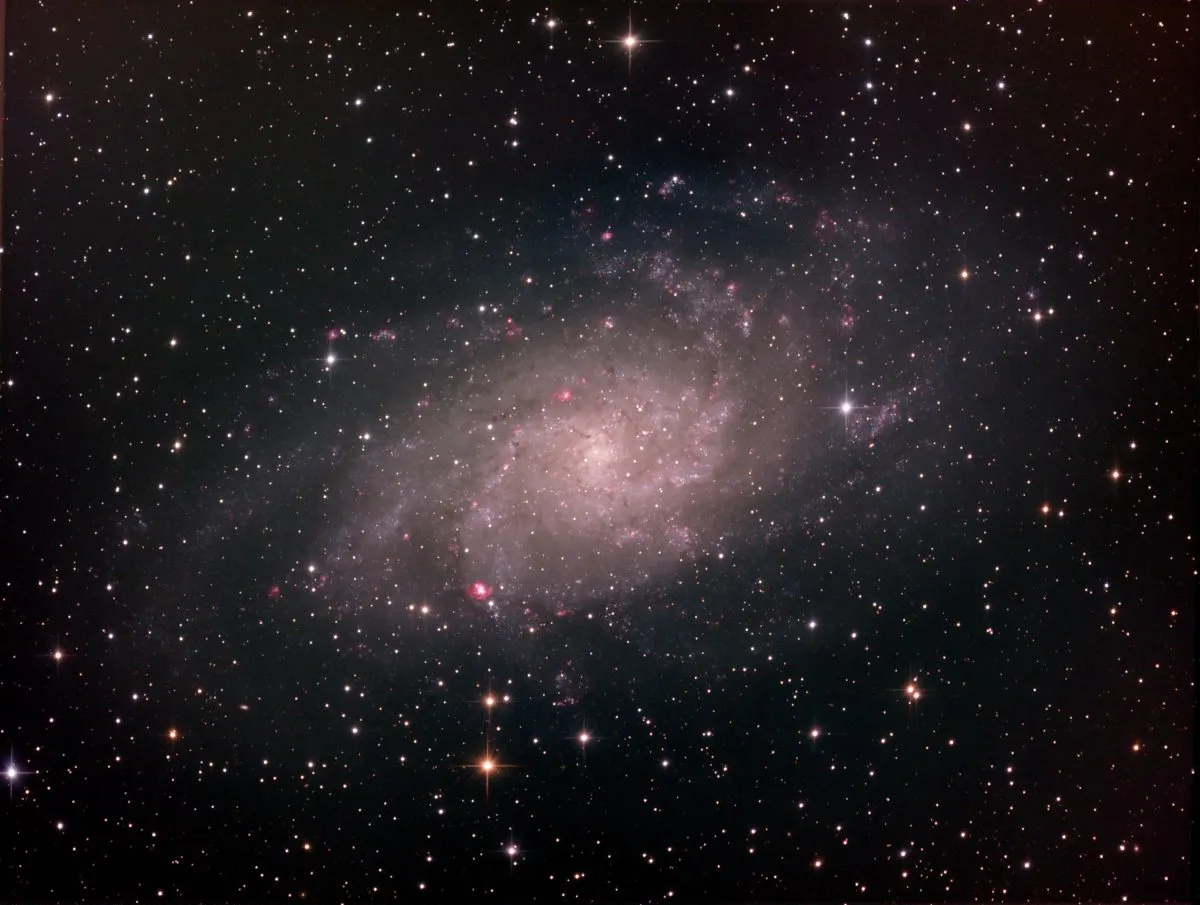
Constellation: Triangulum
RA 01h 33m 54s dec. +30° 39’ 00”
M33 can just be seen with the naked eye under pristine dark skies, but light pollution means binoculars at least.
The Triangulum Galaxy sits between mag. +2.2 Hamal (Alpha (α) Arietis) and mag. +2.1 Mirach (Beta (β) Andromedae).
The Sombrero Galaxy, M104
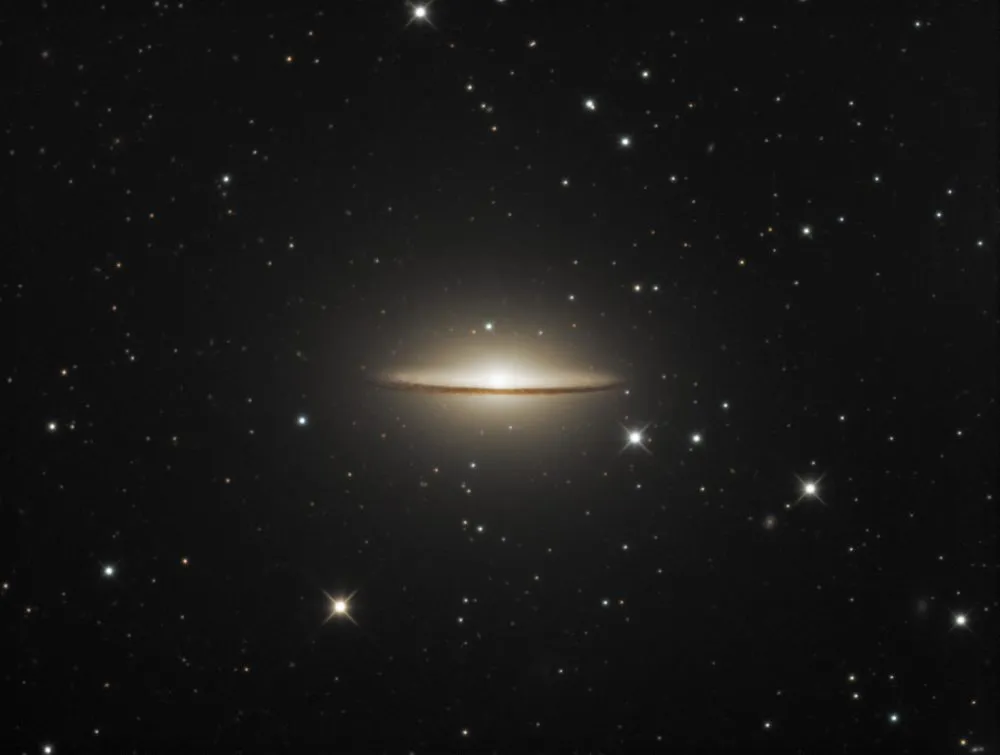
Constellation: Virgo
RA 12h 40m 00s ndec. −11° 37’ 23”
Located just within Virgo, this edge-on galaxy is easy to see in any scope.
A 6-inch instrument shows an elongated glow, but its defining characteristic is a dark dust lane that cuts across the south of the central halo.
M81 and M82
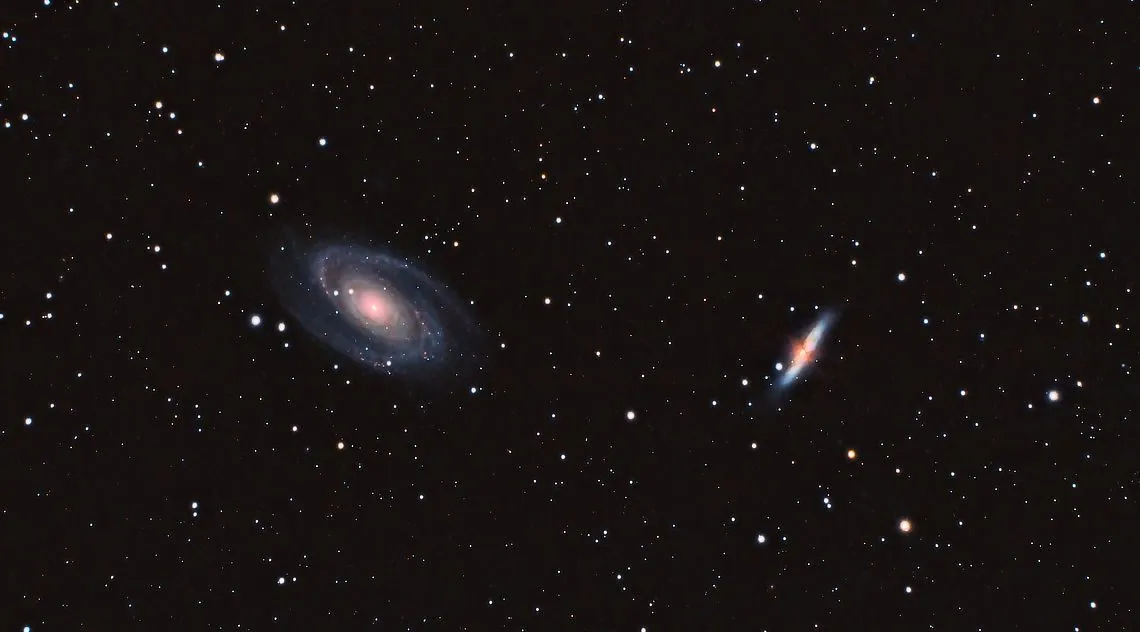
Constellation: Ursa Major
RA 09h 55m 33sdec. +69° 03’ 55”
These galaxies in Ursa Major, M81 Bode’s Galaxy and M82 the Cigar Galaxy, are close to each other in the sky, so we’re treating them as one sight here.
With a small telescope and a low magnification eyepiece, you’ll be able to see them in the same field of view.
The Leo Triplet
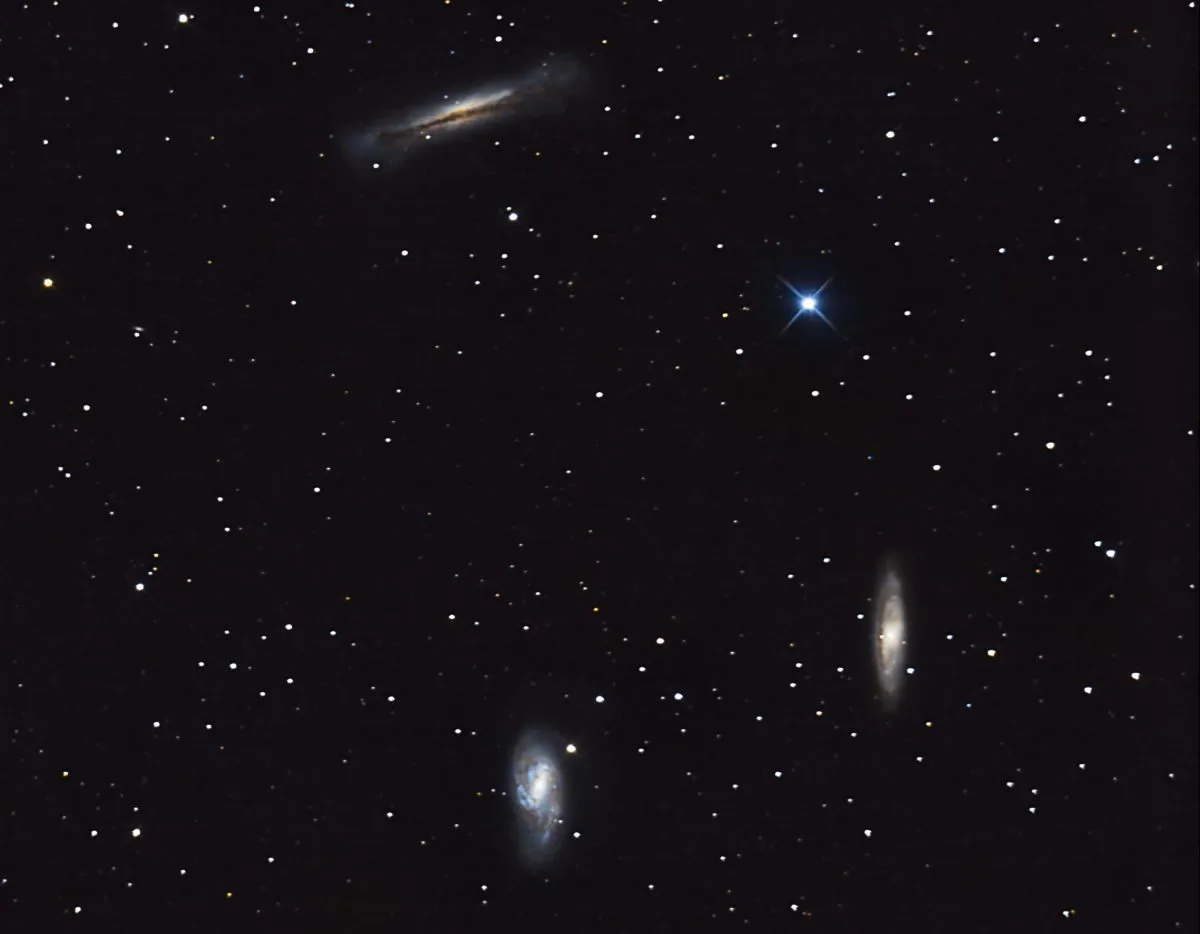
Constellation: Leo
RA 11h 18m 55s dec. +13° 05’ 32”
The Leo Triplet is comprised of the spiral galaxies M65 (co-ordinates above), M66 and NGC 3628, and lies about halfway between mag. +3.3 Chertan (Theta (θ)Leonis) and mag. +6.6 Iota (ι) Leonis.
Larger telescopes will show them clearly. Another group, M95 and M96, is nearby.
The Pinwheel Galaxy M101
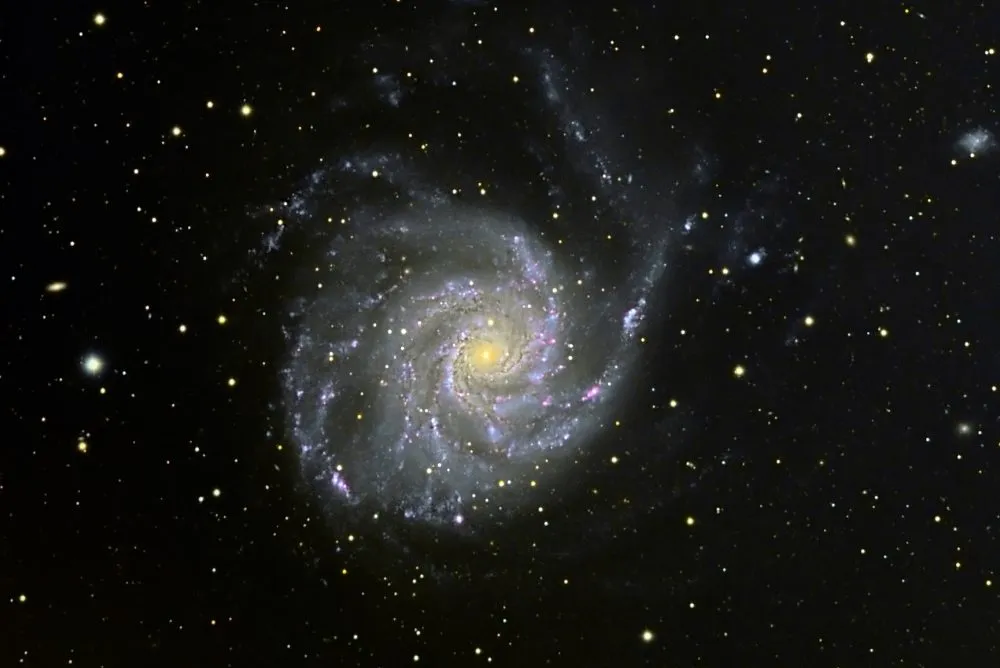
Constellation: Ursa Major
RA 14h 03m 12s dec. +54° 20’ 57”
This face-on spiral galaxy is comparable in size to the Milky Way, and while it can be spotted in binoculars its magnitude of +7.9 means you’ll need dark skies and a 6-inch telescope to see its spiral arms.
What are your favourite galaxies to observe in the night sky? Let us know by getting in touch via contactus@skyatnightmagazine.com or on Facebook, Twitter and Instagram.
